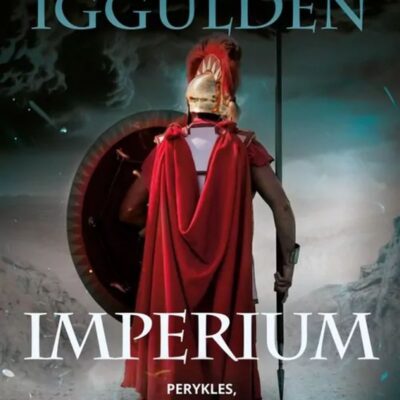The book “Empire” by Conn Iggulden is the second part of the “Golden Age” series, in which we move to the times of Greece in the classical period. This time we will accompany Pericles, a brilliant Athenian strategist and political leader who will lead Athens against Sparta. The book was published by REBIS publishing house.
The previous part (“The Lion”) told about the fight of the united Greek cities against the Persian threat, and the author’s attention was focused primarily on Kimon – an outstanding Athenian leader and politician – who strengthened Athens’ position in the region with his victorious battles at sea. “Empire” is already the post-war period, when the lack of external threat caused the accumulation of further disputes and tensions between Greek cities. This ultimately led to Sparta and Athens, Greece’s two most powerful cities, becoming involved in the conflict. As the author points out in the afterword, he decided not to comprehensively present the causes of the outbreak of the Peloponnesian War, keeping in mind the desire to maintain an interesting plot and not involve a large number of characters. The author reduced the causes of the outbreak of the war only to the feud between the two cities, which, in my opinion, may be misunderstood by many people familiar with the history of ancient Greece.
Pericles, as a great supporter of democracy, reformer, statesman and leader of Athens, becomes the main character of the volume. Wanting to oppose Sparta’s land power effectively, he ordered the construction of the Long Wall, which was to protect the inhabitants of Athens from Sparta and ensure continuity of supply to the city from the sea. For Sparta, the building was unacceptable because at that time ancient armies were unable to effectively breach high walls, and this type of construction made it difficult for the Spartans to influence the city. Ultimately, the Peloponnesian War was lost by Athens after almost 30 years.
The second volume has 400 pages of content; At the end, as always, the author has included an afterword that is intended to help us better understand the author’s idea and the presented plot. Personally, this part lacked a more extensive action and the inclusion of literature and sources recommended/used by the writer.
Moving on to the edition – the book has a nice cover and an overview map of ancient Greece on the opening pages, which is very helpful in finding your way around the action.
To sum up, the second part of the series is worth recommending. The author continues, in a very interesting way, to describe subsequent difficult events for ancient Greece, which, after repelling the Persian attack, now has to deal with its internal conflict.


